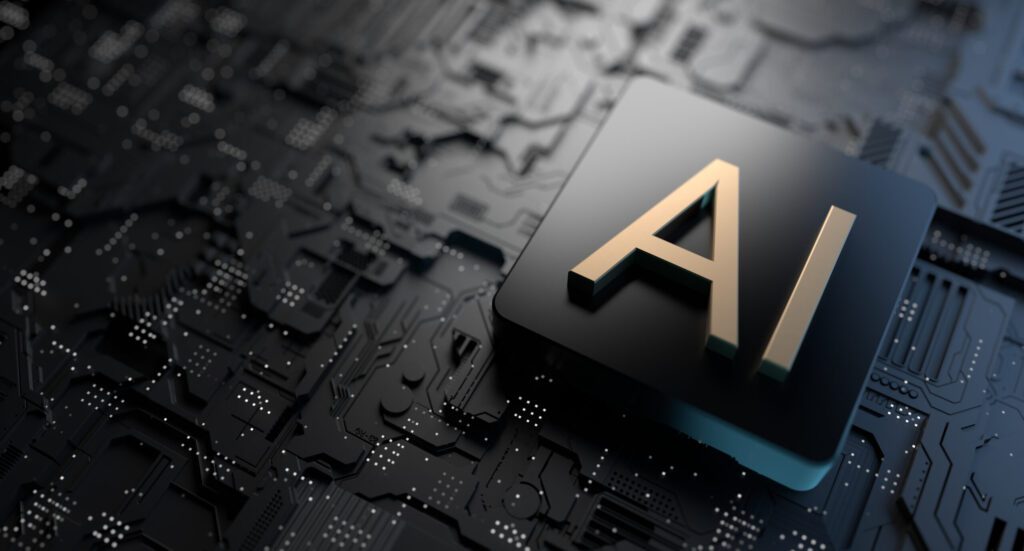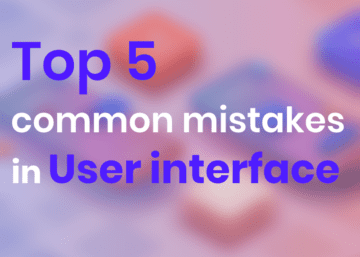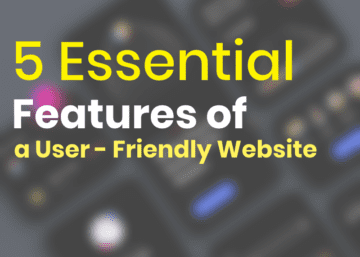After another stormy year, the physical world and its digital counterpart have become even more entwined. We’ve made best friends with smart devices, adapted our home offices for productive remote work, and watched companies shift from paper to units of data.
The software industry never sleeps, but recent years have accelerated its growth, allowing more people to access digital technology that was previously only available to tech-savvy companies and individuals.
We trust our computers more than ever before, which has an impact on how we want to interact with them in our daily lives. Let’s explore how multi-experience platforms, conversational interfaces, even better algorithms, and other new phenomena fit into this year’s top product design trends.
1.Automation hastens the process
“If a process can be automated, it should be automated,” will be one of the most popular product design concepts in 2022. Automation has gained a lot of traction in recent years, and the COVID-19 epidemic has pushed it even more. Businesses and organizations have been increasing their spending on automation as they face the challenges of the “new normal,” and this trend will continue in 2022.
In the year 2021, RPAs (Robotic Process Automation) and “intelligent automation” assumed the lead in the design of automation systems. RPAs’ major purpose is to free a person from doing boring and repetitive labor that consumes valuable time and attention.
Simultaneously, intelligent automation refers to the development of algorithms capable of doing increasingly sophisticated tasks, such as approving a loan application or scanning an invoice.
The task-based method, which is replacing the tool-based approach, is another intriguing product design trend involving automation systems design. In practice, this implies that users of a variety of business apps will receive a curated feed of tasks given by automated algorithms. Results? Focus, productivity, and workflows are all improved.

2.Designing for a conversational experience
The amount of time we spend conversing with machines was revealed by social isolation and lockdown. By popularizing the conversational experience approach in their products and making the connection feel as human as possible, the tech titans have raised the bar for human-to-machine communication.
Conversational UX is centered on linguistic interaction via talking or voice control, with the latter stealing the show as the most user-friendly.
As tech companies introduced their voice assistants, “Alexa,””Hey, Siri,” and “OK, Google” became ubiquitous, and you could hear “Alexa,””Hey, Siri,” and “OK, Google” everywhere — navigating, shopping, booking, and researching.
Moving from personal gadgets to other products such as home appliances, autos, and medical equipment is the next phase in this product design movement. Artificial intelligence (AI), an essential component of any conversational experience design, would not be able to support such growth without its ever-evolving capabilities.

3. Motion design and animation
In August 2021, Facebook announced that it was changing its name to Meta and introducing the Metaverse, a virtual reality network that Zuckerberg described as “embodied internet.”
You may argue that the Metaverse will refocus enterprises on virtual and augmented reality, but that isn’t the case. The evolution of animation and motion design is inexorable, with billions of dollars being poured in building a whole new 3D universe.
The Metaverse may be a massive VR project, but the growing trend in product design to combine motion design and animation will allow it to be used on a variety of platforms and levels of sophistication.
Motion design and animation, when employed correctly, create a visual rhythm that draws and retains the viewer’s or user’s attention. Animation may enhance narrative and form the brand personality and experience because it has a greater impact than a static image.
There’s no better moment for designers to understand motion design ideas and tools than now, especially in the tech industry. A sprinkle of animation in navigation, menus, or interactions in digital software design and development adds moments of delight that make the product pop.

4. Inclusive design and beyond
In an ideal world, inclusion would be a need in the design process rather than a fad. Given that we don’t live in an ideal environment, you may be asking what inclusive design is. What sets it apart from accessible design? Let’s give it the attention it deserves.
The goal of accessibility is to make a product or service accessible to as many people as possible, regardless of their impairments or disabilities. But it’s not all that should be considered while creating an excellent product.
Inclusive design takes into account differences in race, ethnicity, age, gender, language, and sociocultural background. The list could go on and on. Inclusive product design avoids the traditional assumptions made by privileged social groups and allows individuals who were previously disregarded, particularly minorities, to participate in the story.
Take a look at the growing range of emoticons that have taken over our conversations, Slack messages, and emails as an example of inclusive design. We’ve accumulated a diverse range of skin tones, gender identities, age groups, and relationship models over time.
Businesses will invest more in inclusive design in 2022 as we explore new virtual worlds and rely largely on digital communication. How can we design virtual environments that are both accessible and inclusive? There is no one guidebook of ready-to-use principles, making inclusive design an even greater task. However, as fresh examples and best practices emerge, design inclusivity should earn its place as an industry standard.
Businesses will invest more in inclusive design in 2022 as we explore new virtual worlds and rely largely on digital communication. How can we design virtual environments that are both accessible and inclusive? There is no one guidebook of ready-to-use principles, making inclusive design an even greater task. However, as fresh examples and best practices emerge, design inclusivity should earn its place as an industry standard.

5. Nostalgic design
It’s remarkable to see how our brains function in adverse situations – we seek something familiar, something that will make us feel safe. It’s no surprise that 2021 was the year of aesthetic nostalgia, and this product design trend appears to be unstoppable in 2022. As the world begins to heal, nostalgic designs serve as a reminder that better days may (and will) come.
In general, nostalgia is a pleasant feeling that arises when something evokes memories from your past – an image, a sound, or even a fragrance. It’s a bit like deja-vu, but in a positive way. Monotype’s Phil Garnam, a well-known typography studio, describes it perfectly:
“Bien que la nostalgie pure ne soit pas une tendance qui entraîne le changement, c’est un véhicule d’empathie dans un monde qui veut de la familiarité et du confort pendant les moments terribles.” Ce sentiment de familiarité aidera à stabiliser, rassurer et fournir une base de confiance alors que nous nous préparons avec optimisme à pivoter, à rouvrir après le verrouillage. »
Le désir de quelque chose de familier et de tactile chez les consommateurs est plus grand que jamais. Afin de mieux se connecter avec les clients, plusieurs entreprises adaptent l’esthétique excentrique des décennies précédentes dans leurs conceptions actuelles. Les produits numériques contemporains sont inondés de blocs de couleurs vives, de palettes néon mélangées à des empattements gothiques et d’effets glitch lo-fi des années 90. Vintage est le nouveau noir, en un mot.

Gardez un œil sur les tendances en matière de conception de produits, mais ne les suivez pas aveuglément.
Les tendances de conception de produits pour 2022 donnent une image d’un environnement dynamique qui donne aux producteurs de logiciels plus de flexibilité, stimule l’adoption rapide de concepts innovants et offre une meilleure expérience utilisateur pour plus de groupes d’utilisateurs que jamais auparavant. J’espère que ce classement rapide éveillera votre intérêt à étudier de nouveaux concepts et à expérimenter de nouvelles façons !








